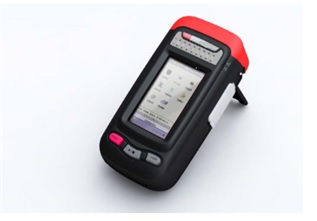Description
Technical Architecture of Cellular IoT Enabled Retail System
The Cellular IoT Enabled Retail System is designed to provide seamless connectivity and data exchange in a retail environment. The architecture is structured around several core components:
- IoT Devices: These include smart sensors, beacons, RFID tags, and wearable devices. These devices collect real-time data on inventory levels, customer foot traffic, and in-store conditions like temperature and humidity.
- Gateways: Cellular gateways facilitate the communication between IoT devices and the cloud server, ensuring reliable data transfer over cellular networks.
- Cloud Server: Data from the IoT devices is transmitted to the cloud for storage and analysis. The server performs advanced analytics to generate actionable insights for inventory management, customer behavior tracking, and predictive maintenance.
- Local Edge Computing: To optimize latency and handle real-time data processing locally, edge computing systems process and analyze data before sending it to the cloud.
- Mobile and Desktop Applications: Retail staff and managers access real-time data through dedicated apps for monitoring inventory, customer engagement, and operational analytics.
- Security Layer: End-to-end encryption and secure communication protocols ensure the privacy and safety of the data collected by IoT devices and transmitted to the cloud or edge servers.
For more insights on IoT architecture, you can visit resources from IEEE and IoT World Today.
Hardware of Cellular IoT Enabled Retail System
The Cellular IoT Enabled Retail System integrates various hardware components that interact seamlessly to provide a connected retail environment:
- IoT Sensors: These sensors track inventory levels, monitor temperature and humidity, and detect motion or customer presence.
- RFID Tags and Scanners: RFID technology is used for efficient asset tracking, inventory management, and loss prevention.
- Gateways: Cellular IoT gateways that connect the IoT devices to the cloud infrastructure over 4G/5G networks.
- Edge Computing Devices: These devices perform local data processing to reduce latency and ensure real-time decision-making in the store environment.
- Smart Displays: Interactive screens display real-time data and insights to customers or store managers, enabling a dynamic shopping experience.
- Cameras and Surveillance Equipment: Integrated with IoT, cameras monitor in-store activities for security, customer engagement analysis, and operational efficiency.
- Wearable Devices: Staff can use wearable devices to receive alerts, track inventory, or engage with customers via personalized interactions.
- Mobile POS Systems: Point-of-sale devices that connect to the IoT network to process transactions while gathering real-time sales data.
For more information on RFID technologies, visit GS1 or RFID Journal.
Physical Placement Considerations of Hardware in Cellular IoT Enabled Retail System
Proper placement of hardware is crucial to maximize the effectiveness of a Cellular IoT Enabled Retail System. Some key considerations include:
- Sensor Placement: Sensors should be strategically placed in aisles, storage rooms, and near high-value products to ensure accurate data on inventory levels and product movement.
- RFID Tagging: Items in high-traffic areas should have RFID tags for faster check-in/check-out processes and real-time inventory updates.
- Gateways: Gateways should be positioned centrally within the store to ensure strong signal coverage and seamless communication between devices and the cloud.
- Edge Devices: Edge computing devices should be placed in areas with critical data processing needs, like near inventory storage or checkout counters.
- Surveillance Cameras: Cameras should be installed at strategic points to cover customer entrances, aisles, and high-value product displays for security and customer behavior analysis.
- Interactive Displays: Smart displays should be placed where customers are likely to engage, such as near product areas or promotional zones.
- Mobile POS Devices: These should be positioned at checkout counters or in aisles for mobility, allowing staff to assist customers in real-time.
Hardware Architecture of Cellular IoT Enabled Retail System
The Cellular IoT Enabled Retail System hardware architecture revolves around connectivity and data flow across various components:
- IoT Devices: These act as the data acquisition points, collecting data such as product movements, environmental factors, and customer engagement metrics.
- Communication Network: The cellular IoT network (such as 4G or 5G) forms the backbone for transmitting data between devices and the cloud. Gateways manage this communication, ensuring reliable data flow across the store or retail network.
- Edge Devices: These systems handle local processing of data, especially critical real-time tasks such as inventory updates and customer traffic monitoring. Edge computing devices act as intermediaries between sensors and cloud systems, ensuring minimal latency.
- Cloud Infrastructure: All the data is transmitted securely to a cloud platform for further analysis, storing large datasets, and running advanced machine learning models that predict customer behavior, inventory needs, and demand trends.
- Applications: Applications used by store employees or customers to interact with the system. These apps can be installed on mobile devices, desktops, or kiosks to deliver data and insights.
For more details on IoT and Edge Computing trends, visit Forbes on IoT or Edge Computing for Retail.
Deployment Considerations of Cellular IoT Enabled Retail System
When deploying a Cellular IoT Enabled Retail System, several factors must be taken into account to ensure successful implementation:
- Network Coverage: Ensure the store has adequate cellular coverage to support the IoT devices, especially if operating in areas with weak signal strength.
- Data Security: Implement encryption protocols to safeguard the sensitive retail and customer data being transferred over the cellular network. Compliance with standards like PCI DSS, HIPAA (for healthcare-related retail), and GDPR should be prioritized.
- Scalability: The system should be scalable to support a growing number of IoT devices as the store expands its product offerings or locations.
- Integration with Legacy Systems: The IoT-enabled retail system should be capable of integrating with existing retail management, ERP, or POS systems to ensure smooth operation across all platforms.
- Maintenance and Support: Regular maintenance of the IoT devices and network infrastructure is required to ensure long-term reliability. GAO Tek offers expert support to help deploy and maintain these systems, both remotely and onsite.
List of Relevant Industry Standards and Regulations
- ISO 27001: Information security management systems
- PCI DSS: Payment Card Industry Data Security Standard
- GDPR: General Data Protection Regulation
- HIPAA: Health Insurance Portability and Accountability Act (for healthcare-related retail)
- UL 2900: Standard for software cybersecurity for IoT devices
- IEEE 802.15.4: Standard for low-rate wireless personal area networks
- ISO/IEC 27018: Protection of personal data in the cloud
- EN 301 489-1: Electromagnetic compatibility (EMC) for wireless devices
Local Server Version of Cellular IoT Enabled Retail System
A local server version of the Cellular IoT Enabled Retail System can be deployed in retail environments that require localized data processing or operate in areas with unreliable internet connectivity. In this configuration, the IoT devices connect directly to an in-store server that manages data collection, processing, and storage. The local server can then sync periodically with the cloud system, ensuring the continuity of data flow and updates while providing fast response times for real-time actions.
For more about local servers and IoT data management, explore TechRadar’s guide on edge computing.
Cloud Integration and Data Management
Cloud integration is a key component of the Cellular IoT Enabled Retail System, offering centralized data storage and advanced analytics capabilities. Key features of cloud integration include:
- Data Storage: The cloud stores vast amounts of data collected by IoT devices, ensuring scalability and easy access.
- Analytics: Cloud-based platforms analyze data to provide actionable insights on customer behavior, inventory management, and operational efficiency.
- Predictive Analytics: The cloud integrates with AI and machine learning systems to forecast demand trends, optimize inventory, and automate restocking decisions.
- Remote Monitoring: Retail managers can access the system remotely, monitoring real-time data on inventory levels, sales, and customer behavior.
- Scalability and Flexibility: The cloud infrastructure can scale as the business grows, supporting additional stores, devices, or locations without significant hardware upgrades.
For a deeper dive into cloud computing for IoT, visit Amazon Web Services (AWS) for IoT or Microsoft Azure IoT.
At GAO Tek Inc., we specialize in delivering customized Cellular IoT Enabled Retail Systems that optimize operations and enhance customer experiences. Our end-to-end solutions are designed to seamlessly integrate with your business needs, ensuring a future-proof retail environment.
GAO Case Studies of Cellular IoT Enabled Retail System
Below are several case studies that demonstrate the capabilities and successes of the Cellular IoT Enabled Retail System deployed in various retail environments across the U.S. and Canada. These case studies highlight the diverse applications and benefits of IoT technology in retail, showcasing real-time inventory tracking, enhanced customer experience, and operational optimization.
United States
- New York City, NY
A major department store chain in Manhattan integrated a Cellular IoT Enabled Retail System to monitor customer traffic and inventory levels. The system optimized staff allocation during peak hours and reduced stock-outs, improving customer satisfaction and sales. Read more about IoT in retail at Gartner. - Los Angeles, CA
A fashion retailer in Los Angeles adopted IoT-based smart shelves and RFID technology for inventory management. The real-time tracking system reduced manual errors, ensuring that customers always had access to the latest stock information, increasing operational efficiency. For more on IoT in fashion, see Forbes IoT Retail Trends. - Chicago, IL
In a high-traffic Chicago shopping mall, a retail outlet leveraged IoT devices to gather data on customer behavior. The insights generated helped tailor promotions and store layouts, resulting in a 15% increase in foot traffic and sales conversions. Explore retail IoT solutions at IoT World Today. - San Francisco, CA
A tech retailer in San Francisco utilized a Cellular IoT Enabled Retail System for dynamic pricing and targeted marketing. By analyzing customer data in real-time, the system delivered personalized offers, driving both customer engagement and repeat visits. Discover more on IoT retail marketing at TechCrunch. - Miami, FL
A large supermarket in Miami integrated IoT solutions to automate inventory replenishment. By linking shelf sensors with the supply chain, the system minimized stockouts and reduced wastage, resulting in enhanced profitability and a more streamlined operation. Learn more at Retail TouchPoints. - Dallas, TX
A leading retail chain in Dallas used IoT-enabled temperature sensors to monitor perishable goods. The system ensured consistent quality, reducing waste and improving the overall supply chain efficiency by providing real-time alerts on temperature fluctuations. For more on IoT in supply chain, check out Supply Chain Dive. - Seattle, WA
In Seattle, a leading e-commerce company deployed an IoT-driven retail management solution to streamline warehouse operations. The system automated stock-level monitoring and order fulfillment, speeding up delivery times and improving customer satisfaction. See more on IoT in e-commerce at Shopify. - Houston, TX
A convenience store in Houston integrated cellular IoT to track product expiration dates and automate stock rotations. The system helped the store reduce spoilage and enhanced operational efficiency, which in turn led to better customer retention. Learn more about IoT in convenience retail at NACS. - Las Vegas, NV
A popular tourist retail outlet in Las Vegas deployed an IoT-based solution to enhance the customer shopping experience. The system collected data on foot traffic and preferences, which was used to tailor in-store offers and display placements, increasing sales during peak hours. Read about IoT in tourism retail at Travel Weekly. - Phoenix, AZ
A retail chain in Phoenix employed an IoT-enabled system to manage customer queues and optimize checkout processes. The system used real-time data to deploy more cashiers during busy times, reducing wait times and improving the overall shopping experience. More insights available on IoT in retail automation at IoT Business News. - Atlanta, GA
An electronics store in Atlanta implemented IoT-based sensors to track product usage and customer preferences. The real-time insights allowed the store to update inventory in alignment with demand, leading to faster restocks and an increase in customer satisfaction. For similar case studies, visit Retail Systems Research. - Denver, CO
A fashion retailer in Denver integrated IoT-enabled RFID tags for seamless inventory management. The system drastically improved stock accuracy, minimized theft, and reduced inventory auditing times, resulting in significant operational cost savings. Learn about RFID and IoT at AIDC 2023. - Washington, D.C.
A high-end retail store in Washington, D.C. adopted cellular IoT to integrate various in-store sensors and data analytics tools. The solution provided advanced insights into customer purchasing behavior, allowing the store to offer more personalized services. For more on smart retail, visit RetailWire. - Boston, MA
A large-scale retail chain in Boston used IoT-enabled smart shelves to automatically reorder products based on real-time demand. This helped the company avoid overstocking and stockouts, optimizing inventory management across its stores. For additional case studies, check out Business Insider Retail. - Charlotte, NC
In Charlotte, a grocery chain implemented IoT-based sensors and smart devices to monitor the freshness of perishable goods. The system significantly reduced product waste, while ensuring customers had access to high-quality products at all times. For more on IoT in grocery retail, visit Progressive Grocer.
Canada
- Toronto, ON
A leading retail outlet in Toronto deployed Cellular IoT to integrate data from various store sensors, including foot traffic counters, inventory sensors, and customer preference trackers. The data allowed the store to create more effective marketing campaigns and optimize in-store layouts, leading to a boost in foot traffic and sales. More details at Retail Council of Canada. - Vancouver, BC
A major retail store in Vancouver implemented an IoT solution to track inventory and automate replenishment across multiple store locations. This solution resulted in better stock visibility, minimized stockouts, and enhanced customer service by ensuring products were always available when needed. Learn more about retail IoT in Canada at Canadian Grocer.
GAO Tek Inc. has been at the forefront of these technological advancements, offering tailored solutions for retailers to enhance operational efficiency and customer experiences. With our deep expertise in IoT solutions and systems integration, we can help you implement cutting-edge technologies to optimize your retail operations, improve data management, and drive sales growth.
Navigation Menu for Cellular IoT
- Cellular IoT Accessories
- Cellular IoT Devices
- Cellular IoT – Cloud, Server, PC & Mobile Systems
- Cellular IoT Resources
Navigation Menu for IoT
Our products are in stock and can be shipped anywhere in the continental U.S. or Canada from our local warehouse. For any further information, please fill out this form or email us.
We are actively looking for partners who are like us located in the U.S. and Canada. For more information on partnering with GAO, please visit Partner with GAO Tek Inc. It lists various ways to partner with GAO, such as OEM Partnerships, Technology Integration, Distribution and Reselling Opportunities, Presenting at the Leading Event Tek Summit, Joint R&D Projects, Training and Consulting Services, Industry-Specific Collaborations, Research and Academic Partnerships.



